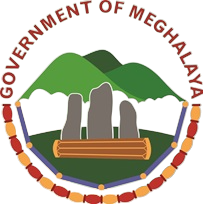Comprehensive Evaluation of Meghalaya Health Insurance Scheme, ie, Megha Health Insurance Scheme (MHIS)
Objective(s) of the Assignment
- To undertake a comprehensive review of policies, systems, and operational design and process under different insurance schemes in the state.
- To strengthen areas of convergence in policies, design and operations for increasing efficiency gains across MHIS and PM-JAY.
- To develop a roadmap for comprehensive improvement in the design, management, operations and administration of the insurance schemes.
Scope of Services, Tasks (Components) and Expected Deliverables Within the overall objectives of this consultancy, the selected agency shall be expected to undertake the following specific tasks:
Part 1 Policy, design and Operation
- Review of MHIS (for all previous policies/phases) including the ongoing MHIS – PMJAY policy; and state employee medical reimbursement scheme.
- To evaluate the overall comprehensive implementation of the Megha Health Insurance Scheme (MHIS) since its inception of its policies, systems, and operational design and process.
- Review the Budget allocation towards the health insurance scheme from the overall Health Department Budget respectively.
- Review issues related to parallel beneficiary databases of the two schemes (State Insurance scheme and Central health Scheme) and explore options for developing state scheme own beneficiary database.
- Review of Scheme’s impact vis a vis the health indicators
- Identify areas of convergence of schemes at the policy and operational levels to ensure efficiency gains and submit policy and strategic recommendations for convergence
Part 2 Scheme Operations (To evaluate and examine the possibility of imposing the beneficiaries’/families’ contribution towards the premium over and beyond the card cost i.e., only on APL families as per the MHIS Beneficiary database. Contribution towards the premium in a form where the family pays a certain percentage of the premium through categorization of households as per the economic status for which a percentage – 10/20/30% etc. of contribution may be determined.)
- Review systems and process related to administration of the schemes, including but not limited to beneficiary identification/enrolment, pre-authorizations, medical management, claims management, grievance redressal, etc.
- Evaluate and review existing interventions of coverage of beneficiaries and identify gaps in the current systems and identify feasible interventions. To study the psychographic behavior of beneficiaries who have not enrolled under the scheme, this will help provide a clear understanding on why there is a gap between the beneficiaries and the registration under the scheme.
- Evaluation on monitoring metrics adopted by the Monitoring and Control Department in fields such as claims monitoring, hospital evaluation and monitoring, Enrolment Drive monitoring, etc. this is to check if such metrics adopted by the concerned department has been efficient and effective and also to bring about improvements.
- Evaluate the overall grievance mechanism practice, types of grievances, nature of grievances and its effectiveness.
- Review on the effectiveness of the current IEC activities being conducted, to see where improvements can be made.
- Review use of information technology across two schemes (state insurance scheme and central health scheme) and identify areas for improvements for efficient management of the schemes.
- Review the Sustainability of the Megha Health Insurance Scheme and bring out recommendations for sustainability of the scheme
- Impact Analysis before and after MHIS implementation in Public Health Facilities
- Evaluate and review the impact of the scheme on the Health Seeking Behaviour of the people
Institutional structure and capacity and financial management
- Evaluation on Utilization of funds generated through MHIS - how such funds have bridged the Healthcare Infrastructure gap in the state. Adherence of MHIS Financial Management to new guidelines of GoI and GoM such as the new Goods and Service Tax Laws, General Financial Rules, etc. To review existing utilization procedures of funds made from MHIS in Public Hospitals and the supply of medical equipment, medicines & drugs, construction works etc from the Directorate of Health Services & NHM, and to identify a system of integration between the different branches of the health department so as to avoid misutilization of funds and resources of the Government.
- To identify ways of strengthening the administration and monitoring of the MHIS funds available with Public Hospitals in the State, District and hospital level taking into consideration integration between different branches of the health department.
- Evaluation and Impact of the incentive model introduced in Public Hospitals; impact on the staff attitude and behaviour etc. Evaluation and Impact of the incentive model introduced in Public Hospitals; impact on the staff attitude and behaviour etc.
- Evaluate on the flow of patients in private hospitals since the existence of the Scheme. To what extend has the Scheme brought about behavior change among the public and has the Scheme increased the access to quality health care.
- Review on the possibilities of expansion of the Scheme, to cover government employees. Financial implications involved in extending the scheme to government employees.
- Review institutional and management structures at the state and district levels, including assessing and identifying gaps in human resources for scheme administration and capacity gap assessment.
- Support MHSSP in compliance to Govt statutory requirements and tax laws i.e. deduction and timely remittances of taxes etc.
- Financial review of schemes, financial implications of convergence, financial modelling, cash flow projections.
- Recommendations on all of the above.
- Financial projections for the State Nodal Agency administering the two schemes, including fund flow statements, projected receipt and expenditure statements, and sustainability plan.
Part 2 Expected Outcome/Deliverables
- Develop implementation plan for the agreed recommendations.
- Develop all operational guidelines and guidelines and manuals - by reviewing and adapting the existing PM-JAY national guidelines and aligning the systems and processes across the schemes, while ensuring that the policy framework and national guidelines for PM-JAY are not diluted in any manner whatsoever.
- Insights on the effectiveness and efficiency of the Scheme and to also understand whether improvement and development needs to be made in the Tender Document and Policy Guideline of the Scheme.
- To help create a concrete and accurate database under the Scheme. This will also ensure that there will be no duplicate data. Reviewing on the need to have a near to accurate data set and removal of duplicate data, will also play a major role in the improvement and increase of Registration percentage in the State.
- To ensure operational efficiency of the concerned department.
- To understand how the scheme has contributed towards the upgradation and promotion of public health facilities, how it has been able to address various health issues and how much it has improved the quality of care and service to its beneficiaries. Thereby also promoting the use of services in public facilities. This will also make the department understand if such funds are used in the most desired manner, perhaps new guidelines can be developed on how funds should be utilized.
- To put a check on the utilization of MHIS funds in public facilities.
- To understand how MHIS has brought about change in behavior and attitude among staff in public health facilities.
- Outcome on the analysis of Medical documentation and Medical Audits.
- To better understand the effectiveness and efficiency of the grievance mechanism in MHIS and PMJAY and suitable suggestions to improve the grievance mechanism of the Scheme. Suggestion and recommendation on how to involve all stakeholders to participate in the scheme. Manual and proper SOP for redressal of grievances. Strengthening the grievance redressal committees at the State and District.
- Awareness strategy to increase, demand and reach of the scheme.
- To be able to adopt a holistic approach towards health care. To promote the need for early detection and prevention of diseases.

